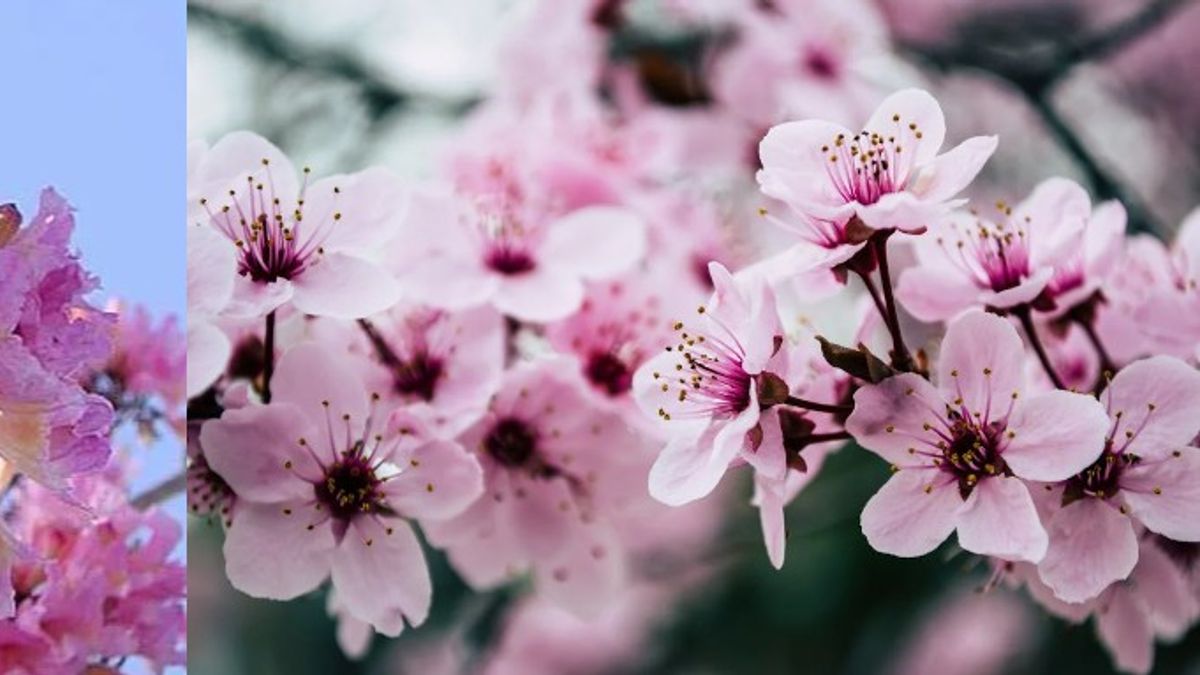YOGYAKARTA - And tabebuya flowers are 2 types of plants that are often a concern because of the sluggishness of their flowers. Although both are interesting, both have significant differences in the aspects of appearance, origin, and characteristics. Let's explore further the differences between the two, equipped with a comparative image that highlights each other's uniqueness.
Sakura (Prunus serrulata) is a Japanese national flower and is part of a highly respected Japanese culture. Sakura generally blooms in the spring, as well as people in Japan commemorating the moment with a tradition known as "Hanami" or a picnic under a timpira tree. A timpirra tree is not only found in Japan, but also in countries such as Korea, China, as well as several regions in Europe and America.
Tabebuya, on the other hand, comes from the tropics in South America, a kind of Brazil, Paraguay, and Argentina. This plant is known as a strong plant and is resistant to dry weather, so it is often found in big cities in various parts of the world as ornamental trees. In Indonesia, tabebuya is becoming famous, especially in Surabaya, which is often called the "city of tabebuya flower."
The kringora flower is famous for its soft pink color, although there are also variants with white flowers. The shape of the tilapira flower tends to be small, with 5 delicate petals, and develops in groups in tree branches. The pastel color of the tilapia flower gives a romantic and soft impression, so it is often associated with fragile beauty.
In contrast, tabebuya flowers have a more striking and brave color, such as bright yellow, white, or pink. This flower is shaped like a trumpet and larger in size than the amicra flower. Not only that, tabebuya flowers also develop in large clusters, providing a very full and striking appearance when they bloom.
The bloom season is also the main difference between these two plants. Sakura generally blooms at the beginning of spring, around March to April in Japan. The appearance of the amicra flower often lasts briefly, only about one to 2 weeks, making the moment very special.
Meanwhile, tabebuya can bloom at various times throughout the year, depending on the local climate. In Indonesia, tabebuya often blooms in the dry months, making it a soothing sight in the midst of hot weather.
Sakura is more suitable to develop in a moderately climated region. This plant requires winter to be able to flower properly in spring. Therefore, sapitra is rarely found in hot tropical areas throughout the year, except in highlands or in places that are climateally approaching the conditions of their home country.
On the other hand, tabebuya is very suitable to develop in tropical and subtropic areas, a kind of Indonesia. This plant is known to be very resistant to heat and drought, so it is often used as an option as a greening plant in urban areas where the weather tends to dry. Tabebuya trees also have strong roots, making them more resistant to wind and harsh environmental conditions.
Sakura has a very strong symbolic meaning in Japanese culture. This flower symbolizes temporary sluggishness, short life, and constant change. Sakura is often associated with the concept of "mono no awareness," namely understanding of wisdom and beauty in a short life.
Meanwhile, tabebuya is better known as a symbol of resilience and strength. In Brazil, this flower is often associated with fighting spirit and hope, especially because of its ability to survive in difficult environmental conditions. Although it does not have a symbolic meaning that is as strong as a pocket in a certain culture, its strong and cheerful presence provides its own beauty.
Chermic flowers are often grown in gardens, streets, and around public places in Japan to create an enchanting spring atmosphere. This tree aesthetic is perfect for spaces that require soft touch and full of beauty, especially around tourist and cultural places.
Tabebuya, on the other hand, is often found on city streets as a protective plant that offers shade and beauty. In several big cities, this plant is grown en masse to add urban aesthetics and improve air quality. Tabebuya's bright colors provide an energetic and enthusiastic atmosphere.
Also read the related news: Sakura Mekar Flower Faster In 1,200 Years, Scientists Call The Climate Crisis
So after knowing the difference between the crater and tabebuya flowers, see other interesting news on VOI.ID, it's time to revolutionize news!
The English, Chinese, Japanese, Arabic, and French versions are automatically generated by the AI. So there may still be inaccuracies in translating, please always see Indonesian as our main language. (system supported by DigitalSiber.id)













